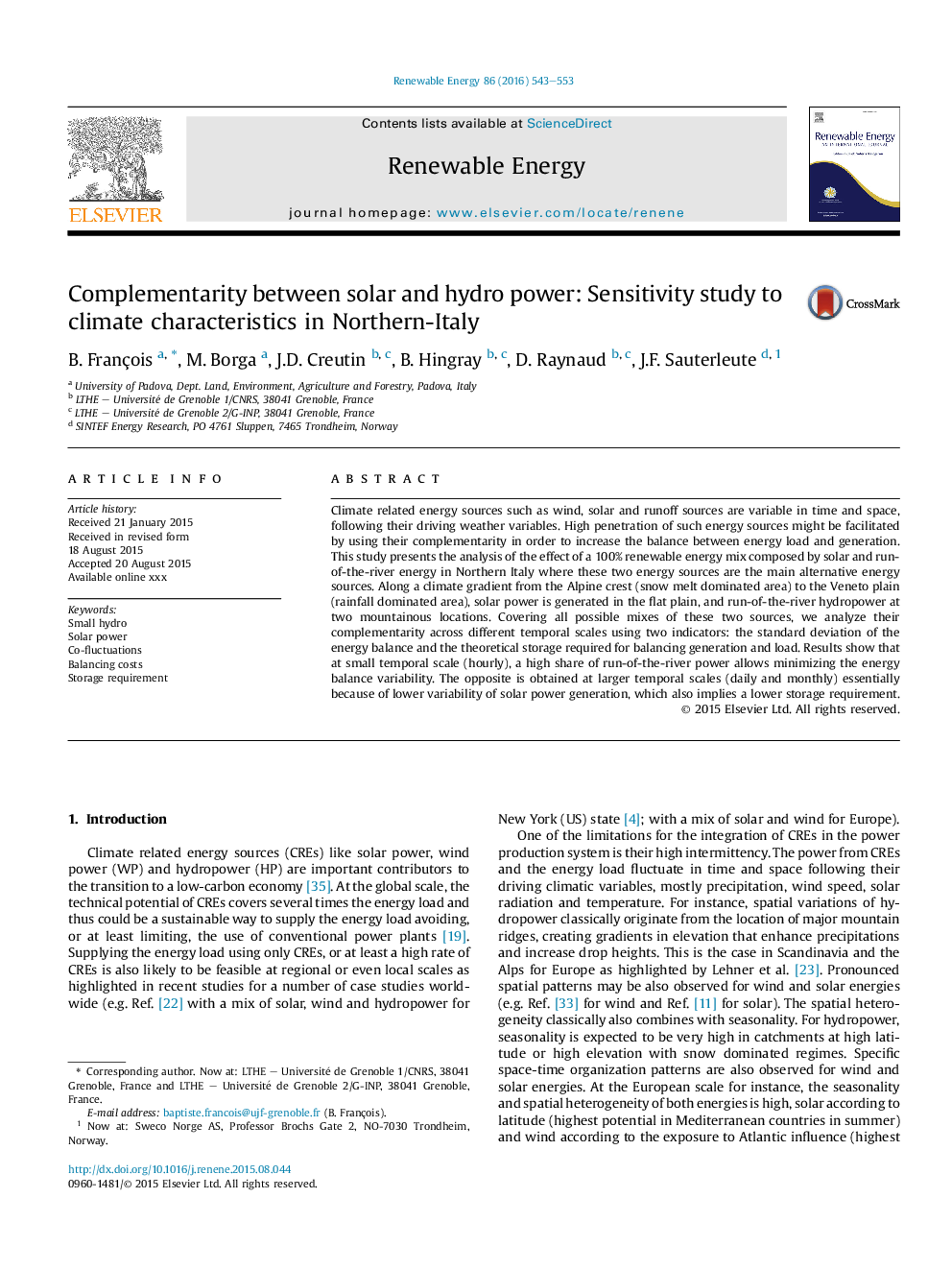| Article ID | Journal | Published Year | Pages | File Type |
|---|---|---|---|---|
| 6766564 | Renewable Energy | 2016 | 11 Pages |
Abstract
Climate related energy sources such as wind, solar and runoff sources are variable in time and space, following their driving weather variables. High penetration of such energy sources might be facilitated by using their complementarity in order to increase the balance between energy load and generation. This study presents the analysis of the effect of a 100% renewable energy mix composed by solar and run-of-the-river energy in Northern Italy where these two energy sources are the main alternative energy sources. Along a climate gradient from the Alpine crest (snow melt dominated area) to the Veneto plain (rainfall dominated area), solar power is generated in the flat plain, and run-of-the-river hydropower at two mountainous locations. Covering all possible mixes of these two sources, we analyze their complementarity across different temporal scales using two indicators: the standard deviation of the energy balance and the theoretical storage required for balancing generation and load. Results show that at small temporal scale (hourly), a high share of run-of-the-river power allows minimizing the energy balance variability. The opposite is obtained at larger temporal scales (daily and monthly) essentially because of lower variability of solar power generation, which also implies a lower storage requirement.
Keywords
Related Topics
Physical Sciences and Engineering
Energy
Renewable Energy, Sustainability and the Environment
Authors
B. François, M. Borga, J.D. Creutin, B. Hingray, D. Raynaud, J.F. Sauterleute,
